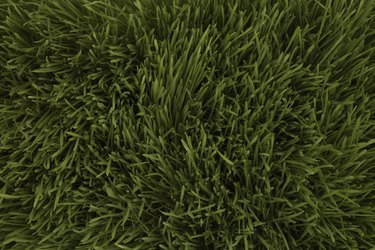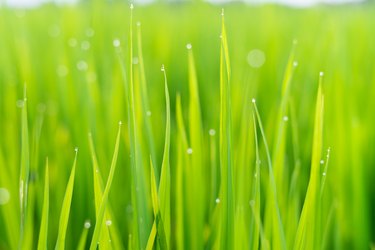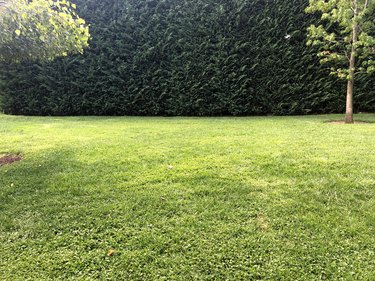
In the heat of the dog days of summer, it is easy to get lazy and let your grass grow longer than is desirable. In addition to its unseemly appearance, overly long grass can cause problems for your lawn's health. Mowing grass too short can promote its own unique set of issues. The importance of mowing lawn grass is often overlooked, and directly impacts both the health and the appearance of the lawn as a whole. Finding the right grass length is key to a healthier and better looking lawn.
Long Grass Problems
Video of the Day
Allowing grass to grow too long is not advisable. For most grasses, a height beyond 3 inches is problematic. At this height and beyond, it is difficult for long grass to hold itself up. This causes it to droop onto surrounding grass, smothering it. When long grass droops, it also traps moisture in lower areas, which can cause fungus and disease to spread. At this length, grass also looks unseemly. It may grow unevenly or turn yellow or brown.
Video of the Day
Long Grass May Induce Shock

Somewhat longer grass is often in better shape than short grass, but mowing very infrequently is harmful. When you allow grass to grow long and then suddenly cut it, the mowing can send grass into shock. Grass roots become diminished and your lawn weakens, making it susceptible to insects and diseases.
Grass Clippings Issues
If you allow grass to grow beyond 3 inches before mowing, clippings become a problem. Allowing clippings from long grass to settle on your lawn causes similar issues to letting grass grow beyond 3 inches. Cutting long grass means that clippings will be longer and can smother the grass, especially during very hot weather. The heat can make grass susceptible to disease.
Short Grass Issues
Although very long grass is a bad idea, it is desirable to allow grass to grow somewhat between mowings. Longer grass is actually healthier than shorter grass as long as the grass does not become excessively long. When grass is mowed very short, under 2 1/2 inches, problems occur. By mowing grass too short, you reduce the leaf surface, which is where grass makes food. This causes grass to rely on reserves in its roots in order to grow. Eventually, roots become weak and less able to endure rain and drought. Weeds can also invade short grass more easily.
Turfgrass Cutting Guidelines

Lawns that are allowed to grow to 2 1/2 inches before mowing have deeper and sturdier roots, fewer weed invasions and look better. During the summer months, cutting grass once per week is a good rule of thumb. Cut grass often enough that it remains around 2 1/2 inches tall and avoid cutting more than one-third of the blade length per mowing. For example, if your grass grows to 4 inches, cut it no more than 1 1/3 inches during the next mowing. If your grass does become too tall, gradually cut it back to the proper height over several mowings by mowing more frequently and adhering to the one-third rule.